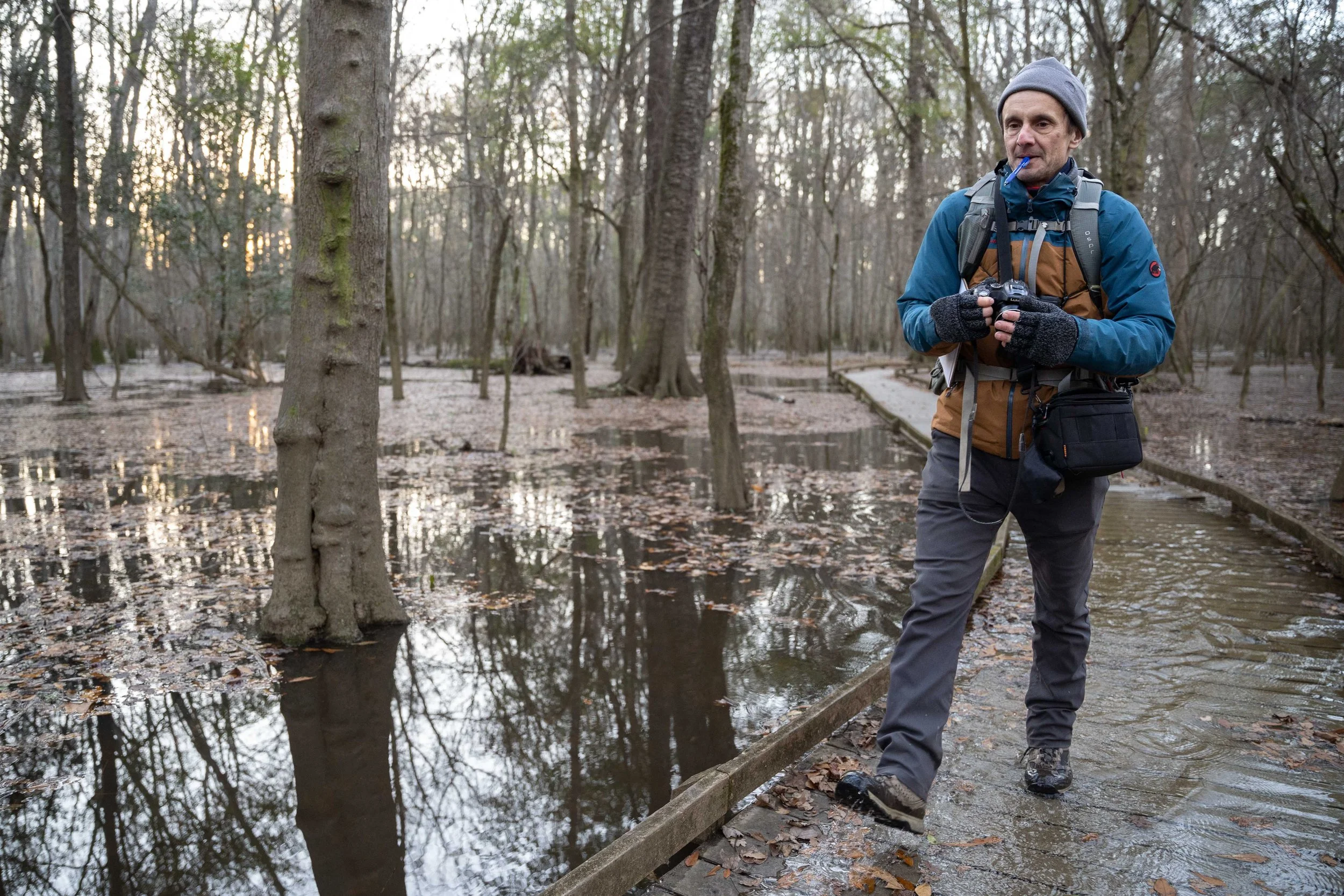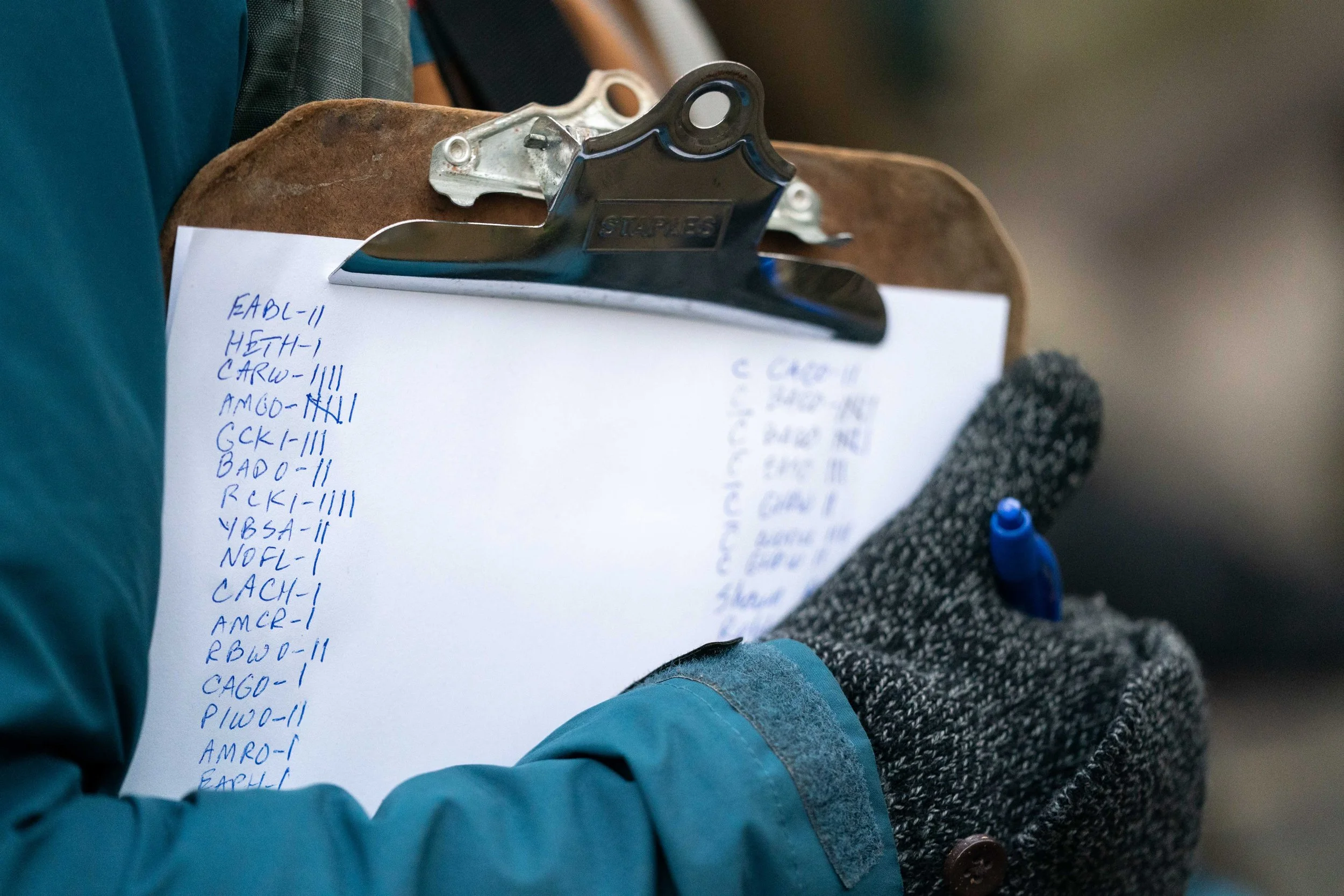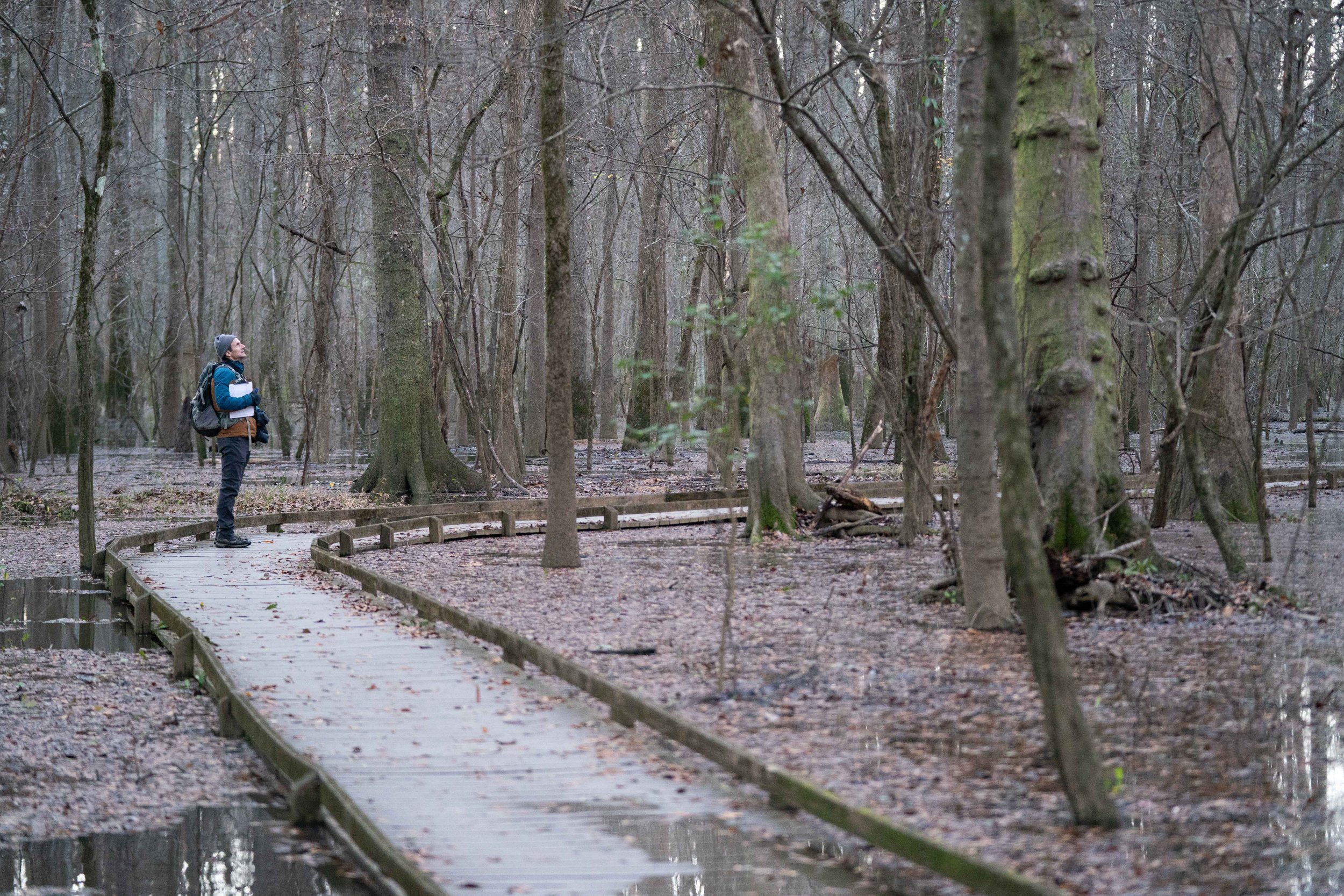Christmas Bird Count
Photos and words by Sean Rayford
On Christmas Day in 1900, ornithologist Frank Chapman inspired 26 other birders, mostly across the North American northeast, to count birds instead of shooting them. This first Christmas Bird Count tallied about 18,000 birds and 90 species.
In the late 19th and early 20th centuries, tradition called for competitive hunting parties during the winter holiday season. The team that hauled in the most dead things was the winner of the ‘side hunt.’ Folks lived off the the land before the first Piggly Wiggly, but over-harvesting and declining bird populations concerned the ornithologist from New York. Laws protecting songbirds and raptors, and bag limits on waterfowl did not exist.
“It’s like Easter egg hunting with binoculars,” says retired state worker Robert Miller, “You don't ever get bored because you're always looking. And you never know what's gonna be around you.” Miller grew up around hunting and identifying bird species. Observing birds has always part of his life. Last weekend, Miller joined a small group of birders for the Christmas Bird Count at Congaree National Park.
Taking place Dec. 14 though Jan. 5, the CBC is North America’s oldest citizen science project.
Some folks participate by watching bird feeders in their back yards. Others venture into farmlands, or preserved spaces, like at Congaree National Park, the largest old-growth bottomland hardwood forest in the Eastern United States. Christmas Bird Counts now take place all over the globe.
“It really does put the Christmas in the Christmas Bird Count because it’s really fun to see what the people report,” says John Grego, “A really good count on the species we're suppose to have high counts for, like barred owl, or yellow-bellied sapsucker, or northern flicker or winter wren. Maybe they report some really interesting species too. Each report is like a little gift as they come in, and you get to add to your spreadsheet.”
John Grego watched upstream river gauges like a hawk as the Christams Bird Count at Congaraee National Park approached. As the park flooded, the count manager redirected teams scheduled to hike on the floodplain. Each year, data from the bird counts can be affected by variables like the weather - or in the case with the national park, flooding. The Christmas Bird Count is truly vaulable because of the 122 years of data collection, providing insight on long-term trends.
Grego, a retired professor of statistics at the University of South Carolina, manages the Congaree National Park section of the CBC, where his teams regularly report top five national counts for multiple species of woodpeckers.
“This time of the year in the winter, the big cool bird is the pileated woodpecker. It's the size of a crow but is a woodpecker,” says Columbia birder Aaron Olson, “That one is unmistakable and anyone who sees it in person who isn't expecting one, is pretty astonished by what that guy looks like. They are very plentiful at Congaree National Park.”
Grego, also president of the Friends of the Congaree Swamp non-profit, says that the CBC has been invaluable documenting the decline of certain important bird species. Grego also participates in the Columbia, SC Christmas Bird Count. "It becomes harder and harder to find loggerhead shrike, or field sparrows, or savannah sparrows, or American pipit or northern harriers. All these field based species that I used to have less difficulty finding.” Grego says that this suggests issues with declining open space and water quality.
You can learn about participating in Christmas Bird counts on the Audubon website or visit a summary of last years count.
Related Photo Stories: The Magic World of Snappy Syncs
About the author: Sean Rayford is a South Carolina photographer specializing in photojournalism and documentary photography. Rayford first vsiited Congaree National Park before it was a national park during a field trip for a geology class at the University of South Carolina.









